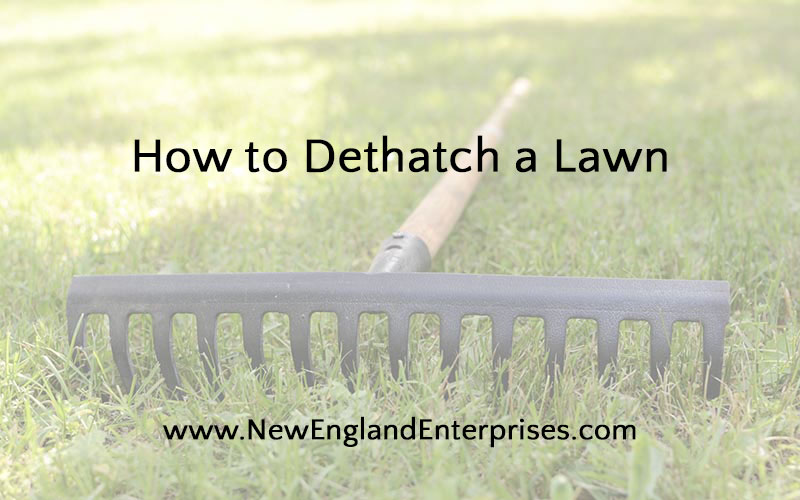
During the withering heat of summer, many home owners fear what a drought might do to their lawn. An extended period without rain leaves the lawns with those dreaded yellow and brown spots of dying grass. With the summer heat coming, it’s important to ensure that your lawn is getting the moisture, nutrients, and aeration it needs. An important step to ensuring your lawn is in good shape is to dethatch it. Dethatching a lawn will allow it to absorb more of the moisture from a rain storm or watering session. This results in a healthier, more resilient, and greener lawn.
What is Thatch?
Thatch is a layer of stems and roots which have not decomposed. This layer accumulates where the roots of the grass try to meet the soil. As this layer grows thicker, it forces the roots away from the rich top soil, affording them less access to nutrients. Thatch also acts like a dam, collecting more and more particles till it becomes an inch or more think. If it becomes thicker than one half inch you should consider dethatching. Thatch is actually beneficial to grass, as long as long as it is below a certain amount. Too much thatch keeps water, nutrients, and aeration from penetrating down into the grass and feeding them.
Does Your Lawn Need to be Dethatched?
Cut out a small section of grass several inches deep and inspect it. If the thatch layer between the roots and the top soil is a half inch or thicker, it is a good idea to get your lawn dethatched. When inspecting your sample, look for a spongy-feeling, reddish-brown layer situated between the green grass and the soil. To some the thatch layer resembles a mat of felt. If you find this layer, you should consider dethatching. The best time to dethatch is in the fall or preferably spring when the grass is blooming. Always make sure to check if the thatch is deep enough to warrant the dethatching process before you start. Since dethatching can be stressful on lawns, make sure to do so only as needed.
Power Raking for Faster Results
For small patches of lawn, a tough garden rake will be enough, if you don’t mind some exercise. Make sure you aren’t using a flimsy plastic leaf rake. It will require you to use a lot of force to properly break up the thatch. With a garden rake or a dethatching rake, just pull it through the grass. You will see the thatch being pulled up. However, for larger lawns, consider using a power rake to get the job done more quickly and efficiently. These look like lawn mowers but are specifically designed for dethatching.
Dethatching your lawn is an important part of maintaining a healthy and attractive lawn. It is, however, a lot of hard work that needs to be done correctly. If you need help, contact a professional. We can also help you with grading and drainage of your property. These are both important to ensure the beauty and health of your lawn. We have the expertise, equipment and manpower to fully restore your lawn.
